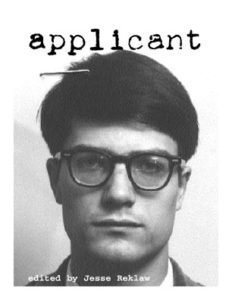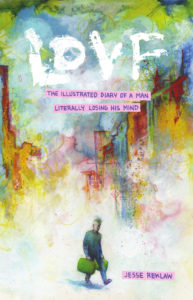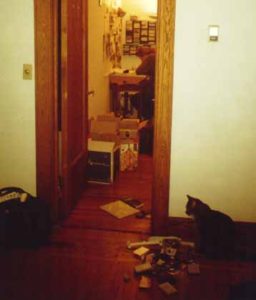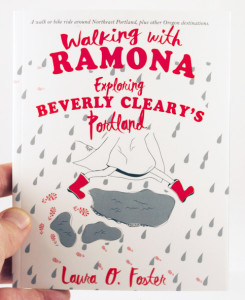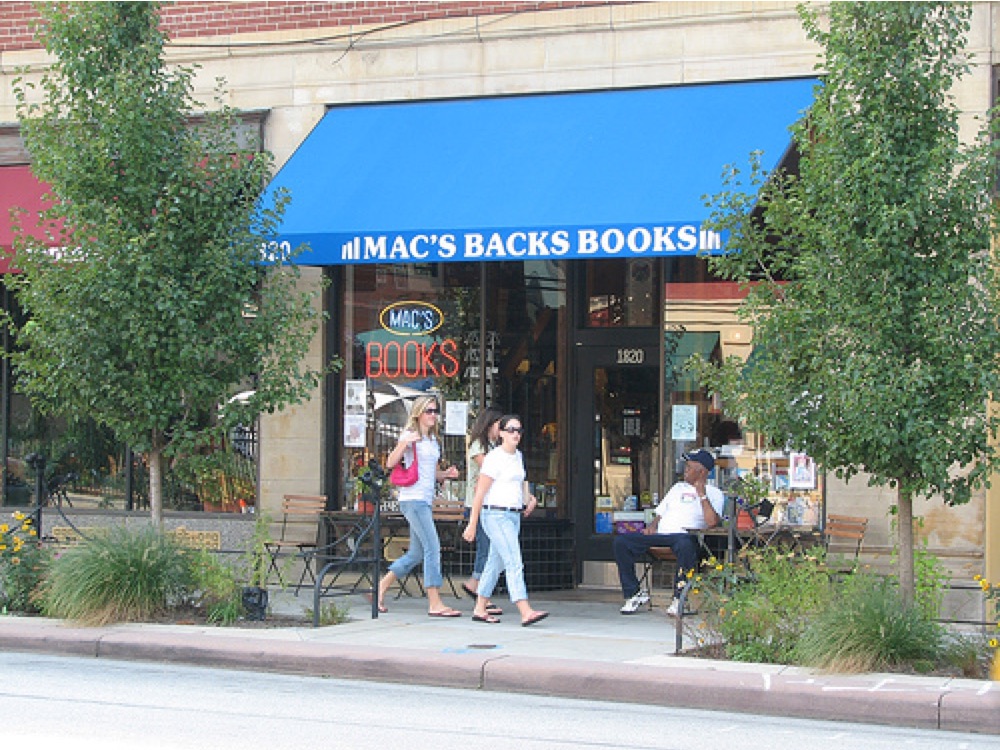 Our indie bookstore crush this month is on Mac’s Backs, a paperback-focused new and used bookstore in the Coventry district of Cleveland, Ohio. This was the store where young Joe would go to get inspired… and when we went back a couple of years ago (after having peanut butter, banana, and pickle sandwiches at the attached restaurant), the bookseller he remembered best, Suzanne, was still there, with a friendly greeting! The store is one of those labyrinthine places, where just when you thought you’d seen every section you find a new door or spiral staircase and it takes you to a whole new realm, with books stacked everywhere and a well-chosen but not-too-controlled selection—perfect for browsing.
Our indie bookstore crush this month is on Mac’s Backs, a paperback-focused new and used bookstore in the Coventry district of Cleveland, Ohio. This was the store where young Joe would go to get inspired… and when we went back a couple of years ago (after having peanut butter, banana, and pickle sandwiches at the attached restaurant), the bookseller he remembered best, Suzanne, was still there, with a friendly greeting! The store is one of those labyrinthine places, where just when you thought you’d seen every section you find a new door or spiral staircase and it takes you to a whole new realm, with books stacked everywhere and a well-chosen but not-too-controlled selection—perfect for browsing.
We partnered with Mac’s Backs this month in honor of Independent Bookstore Day (which was technically in April, but we like to celebrate it every day). Suzanne, now the owner, thoughtfully answered our interview questions. Read on!
1. What is the story of Mac’s Backs? How did you decide to get into the bookselling business?
My business partner Jim McSherry opened the bookstore in 1978 and when he was looking to open a 2nd location in 1982 I came on board to run it. I thought I would be doing it for a few years until it got off the ground and here I am 36 years later!
We are a new & used bookstore with magazines located in a busy walking neighborhood near Cleveland’s museums and Case Western Reserve University. Our area is very diverse and we have a wide range of customers. It is essentially progressive, democratic and left-leaning politically. There are also lots of families that come here—we are attached to a very popular restaurant that caters to all generations. Our business district has many unusual indie shops and restaurants and being part of such an eclectic shopping community has contributed to the longevity of our store.
2. Joe still talks about buying books from you when he was a teenager growing up punk in Cleveland. Have you seen changes over the years in what kind of books your teenaged—and other-aged—customers are looking for, and what they seem to be making of them?
Over the years our customers have read to educate themselves as well as for entertainment. Our best sections have always been classics, literary fiction, philosophy, poetry and political books like the People’s History of the United States by Howard Zinn. We have a huge used science fiction section so we have tons of sf customers. Our biggest growth sections in the last few years are children’s books and graphic novels. And if five good graphic novel for middle-grade girls could be published every day that still may not be enough to satisfy the demand!
3. What are your favorite books that Microcosm publishes or distributes? What about your favorite non-Microcosm book in the store right now?
Some of my favorite books that I buy from Microcosm are by Aaron Cometbus. I liked learning about the Berkeley booksellers in The Loneliness of the Electric Menorah and I really enjoyed Bestiary of Booksellers. There is a writer in Ellensburg, WA named John Bennett who used to publish a series called Survival Song, which was an episodic chronicle of his life that I was addicted to reading. I find the same everyman qualities in the books by Cometbus.
Other Microcosm staff and customer favorites are The CIA Makes Science Fiction Unexciting, Bikes in Space, Henry & Glenn, Guide to Picking Locks, This is Your Brain on Anxiety, How to Ru(i)n a Record Label, and Good Trouble.
My favorite non-Microcosm book to recommend to customers is Through the Windshield by Mike DeCapite, a fictional account of a soulful cab driver in 1980’s Cleveland whose best friend is a wise-cracking compulsive sports fan who bets on everything.
4. What do you think of the state of the book industry right now, and where do you foresee it going in the next ten years? What would you most like to see happen?
I think neighborhood and indie bookstores have been strengthened in recent years. The robust grassroots buy local movement across the country has really made a difference in how people think about shopping. They understand that their choices have consequences in their community and have responded by supporting local independents—and that has made a huge difference. This has allowed us to continue to do what we have always done—to be a friendly community gathering place, maintain a broad and interesting selection of books for our customers to discover and provide the best customer service possible. And our partners in this have always been the small presses like Microcosm.
Anything else you want to share?
Happy Anniversary Microcosm!!
Thanks, Suzanne! Everyone, go to Cleveland and find our books and others at Mac’s Backs!
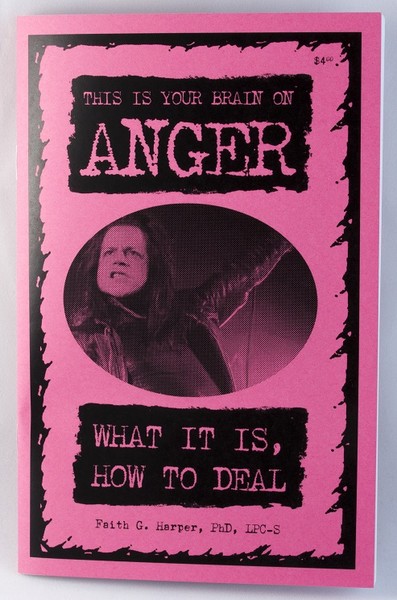 I’ve doled out some bad, inactionable, sort of pompous road rage advice in my day. “Breathe,” I’ve said. “Remain calm.” Ha. As if it were so simple.
I’ve doled out some bad, inactionable, sort of pompous road rage advice in my day. “Breathe,” I’ve said. “Remain calm.” Ha. As if it were so simple.
 On Valentine’s Day in 2013 I finally brought home Ruby, my medical alert service dog, after years of meetings, phone calls, paperwork, and interviews. She’s been a wonderful angel for most of the time since but every day when we go to work she would be stuck sleeping on my the floor next to my chair. She would periodically look up at me, pleadingly. One thing that I hadn’t realized when I had applied for her was that a dog’s range of emotions is identical to a human’s and that Ruby and I were in a committed relationship. I had to look out for her, make her feel loved, and take care of her.
On Valentine’s Day in 2013 I finally brought home Ruby, my medical alert service dog, after years of meetings, phone calls, paperwork, and interviews. She’s been a wonderful angel for most of the time since but every day when we go to work she would be stuck sleeping on my the floor next to my chair. She would periodically look up at me, pleadingly. One thing that I hadn’t realized when I had applied for her was that a dog’s range of emotions is identical to a human’s and that Ruby and I were in a committed relationship. I had to look out for her, make her feel loved, and take care of her. 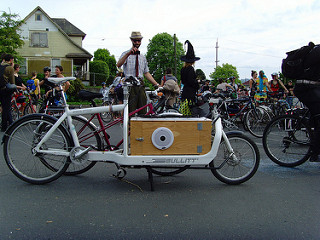 About a year ago, I was visiting my pal Davey’s bike shop (the recently exploded & then reopened
About a year ago, I was visiting my pal Davey’s bike shop (the recently exploded & then reopened 
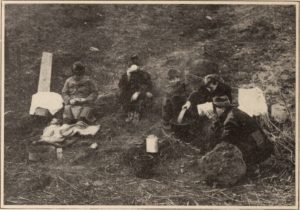 We just got back into town this past weekend, after a couple of weeks in California. In that short time, there is a noticeable increase in the number of camps, and the number of tents at established camps along our route to work. Biking past before 8am, the tents are silent and zipped up; in the evening, people sit outside, playing instruments, chatting, watching the world go by.
We just got back into town this past weekend, after a couple of weeks in California. In that short time, there is a noticeable increase in the number of camps, and the number of tents at established camps along our route to work. Biking past before 8am, the tents are silent and zipped up; in the evening, people sit outside, playing instruments, chatting, watching the world go by.